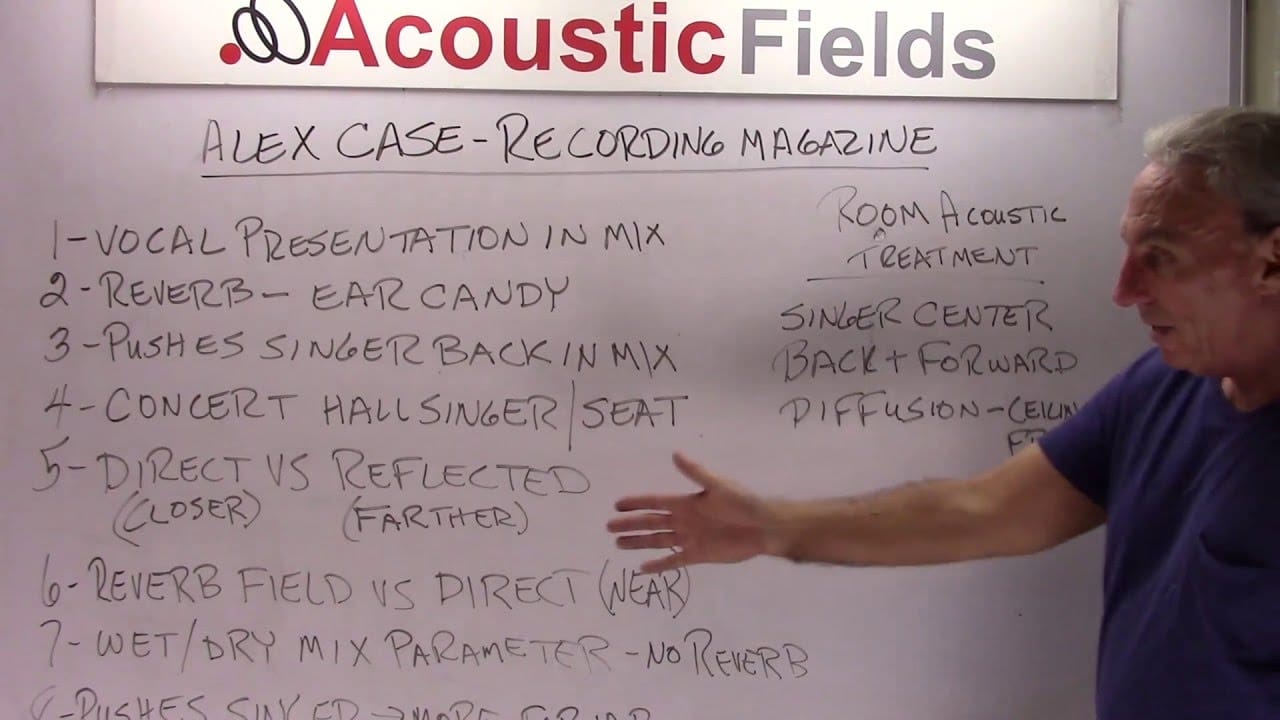I like Recording Magazine, I’m sure some follow it on the net (recordingmag.com). Alex Case is a guy who has been writing about a singer and positioning him in the mix. And he talks about reverb, adding a lot of reverb to the singer which seems to be standard procedure today. He calls it ear candy, it’s that sound that we all know in today’s vocals, it’s that reverb sound. I don’t know exactly how to describe it, but I think we all know what it means.
Alex is right when he claims that this use of reverb right out of the gate pushes the singer back in the mix and maybe sometimes you want that singer more forward, more, as Alex says, in your face. He cites an example of a concert hall direct versus reflected energy. If you’re sitting close to the stage you’re getting more of the direct energy from the singer and they sound closer to you. If you’re sitting farther back from the singer, you’re getting more of the reflected energy from the hall and thus a sense of farther back and distance. So it’s the balance between the reverberant field and the direct which is near. That’s a good way to visualize reverb in the mix.
Alex comes up with the solution, he uses that wet dry mix parameter which is a control which I guess you have your console to do certain things with. But it’s not reverb based and that gives you the ability to move that singer up closer to you. So I just wanted to take his example which I thought was really interesting and made a lot of sense and apply it to small room acoustics. You can do the same thing. We don’t have a wet dry parameter mix button, we don’t have a reverb button, but we do have room treatment. And we can do a lot of things with room treatment in the presentation side. We can move that singer in the center, that’s not difficult, if we control the rates and levels of absorption of the side walls and the distances to the listening position, we can get that singer right in the middle of our presentation.
Now how far forward or how far back in that presentation, we don’t have to change our seating as we do in a concert hall as Alex suggested, but we can just use diffusion on the ceiling in the front wall. And there’s a balance between types of diffusion and what kind to use on what surface area, it is our ceiling or front wall that will give you the ability to bring that singer forward or push it back. So the same thing that an engineer does with a wet dry mix button and a reverb button, we can do with room treatment. You have to know what surface area, you have to know how much, you have to know the right level of absorption. There are about four or five variables that you have to consider, but it can be done. So I thought it was interesting that through room acoustic treatment we can do similar things that an engineer can do with a button.
—
This is an unedited transcript from our video series from Acoustic Fields. There will be some errors in grammar and sentence structure that occur during this translation process.
For complete understanding and comprehension, please view the video which is included in this text. For any additional information regarding this topic or others relating to room acoustics, please contact us directly at:
P: 520 – 392 – 9486







